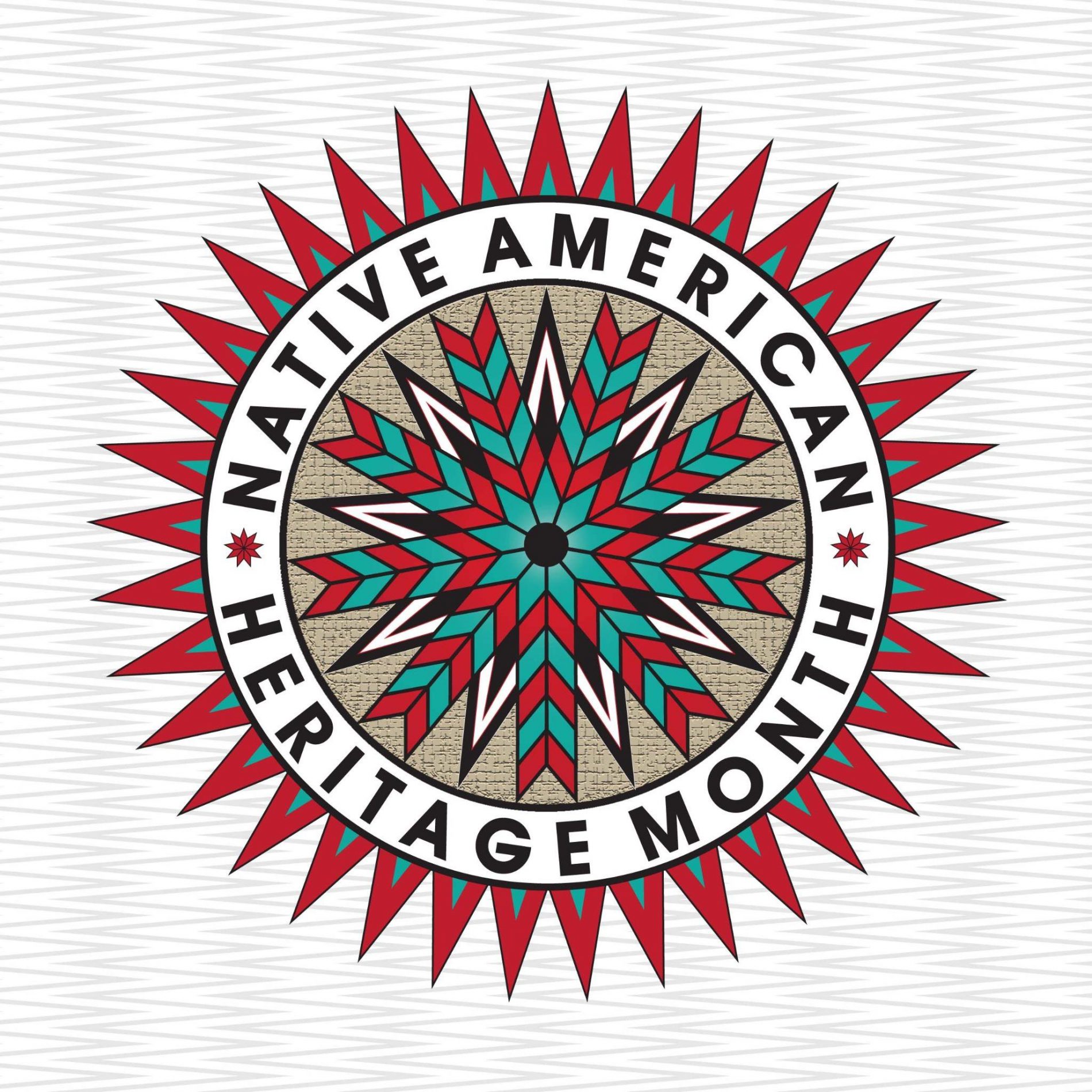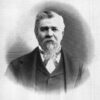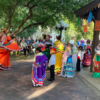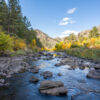During the month of November, we join the nation in celebrating Native American Heritage Month, recognizing the significant contributions the first Americans made to the establishment and growth of the United States.
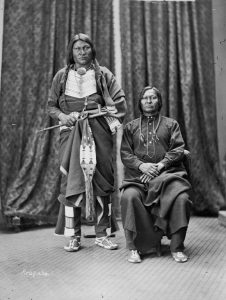
Crazy Bull and Chief Friday in Washington, D.C. in 1873. That year, a delegation of Northern Cheyenne and Arapaho from the Red Cloud Agency went to the capitol with their agent, Dr. John J. Saville, to discuss their hunting rights as well as their future home (Photo by Alexander Gardner, 1873)
Indigenous peoples have been living in and migrating through the unique eco-tone of the Cache la Poudre River National Heritage Area for more than 13,000 years. As Brenda Martin, Curator for the Fort Collins Museum of Discovery writes, “Tribal groups as we know them today are not recognized as being present until 1,000 A.D., if not longer, beginning with the Numic (Uto-Aztecan) speakers, commonly known as the Ute. Oral tradition and the ethno-historic record show evidence of other tribal groups like the Apache, Comanche, Arapaho, Cheyenne, Kiowa, Lakota, Shoshone, and Pawnee in Colorado as early as the mid-17th century.”
In the early 1800s, after the Louisiana Purchase, Euroamericans begin exploring the Plains. In the 1850s, the federal policy of westward expansion brought many more people to the area of the country we now call Northern Colorado. This policy promoted agriculture, mining, and trade. Thus began a painful history for the Native American tribes that have called this area home for so many hundreds of years.
Martin writes, “In 1868, the last of the Native Americans, Friday and his band of Arapahos, were removed to Wyoming, with the Federal government mandating by 1878 the removal of all Native people to designated reservations. Except for the Southern Ute Indian Tribe and the Ute Mountain Ute Tribe, all others were located outside of Colorado. Combined with other assimilation policies, conversion to Christianity, restriction to boarding schools, and the outlawing of most Native American ceremonies, there was a tremendous loss of cultural knowledge and traditions.”
In their own words, Northern Arapaho elders shared the importance of the Poudre River to their tribe’s history and culture on this video series produced by the Poudre Heritage Alliance:
This month, we look forward to sharing some of the many stories of Native American peoples and celebrating their unique cultures and traditions. We hope you will join us in learning more about the indigenous tribes of the Cache la Poudre River National Heritage Area and sharing in the celebration of our Nation’s First Peoples.
Sources:
Burris, Lucy. (2003). People of the Poudre; An Ethnohistory of the Cache la Poudre River National Heritage Area
AD 1500-1880. Fort Collins, CO: Cache la Poudre River National Heritage Are, Friends of the
Poudre, and the Dept. of the Interior National Park Service.
Martin, Brenda. (May 2009). Native American Timeline for Larimer County, CO [PDF file]. Retrieved from https://poudreheritage.org/wp-content/uploads/native_american_timeline_for_larimer_county.pdf

